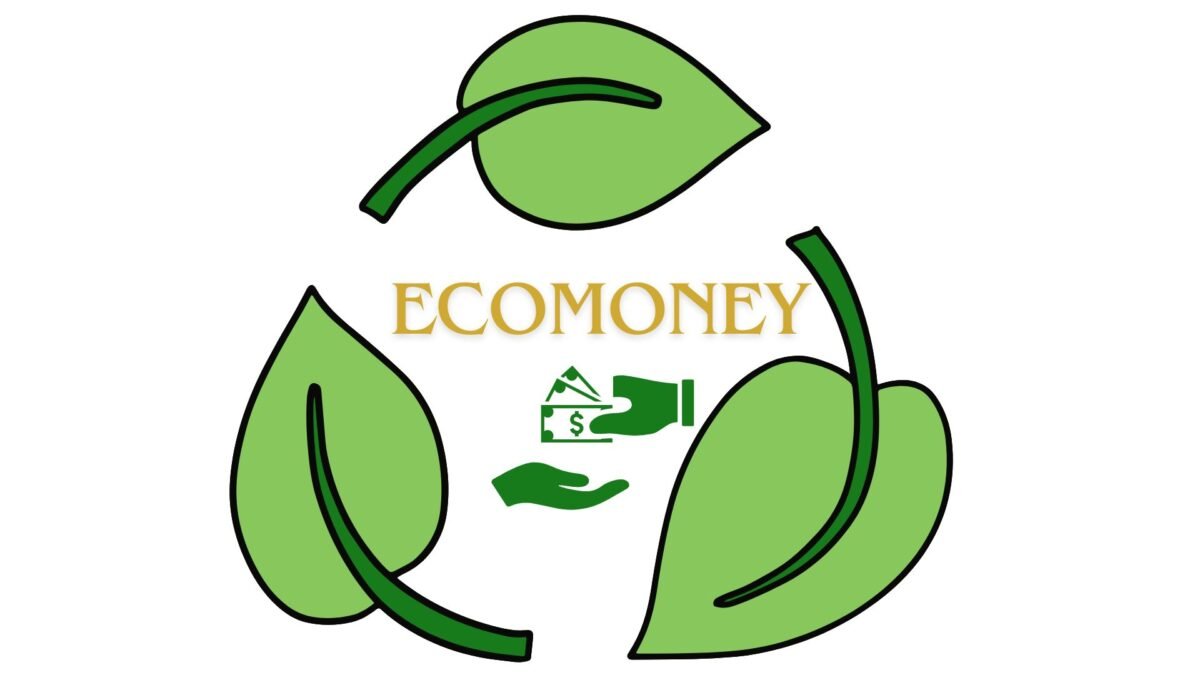Implementing Ecomoney: 8 Ways of Step-by-Step Guide

In today’s fast-changing world, blending smart finance with sustainable practices is more important than ever. Ecomoney is all about creating a financial system that not only drives growth but also cares for our planet. In this guide, we break down how to put Ecomoney into action with step by step.
What Exactly Is Ecomoney?
At its core, Ecomoney is the meeting point of eco-friendly ideas and modern financial strategies. It means investing in projects that help the environment while still making good money. Think of it as the money system of the future—one that supports clean energy, sustainable businesses, and smart technology.

- Sustainable Investments: Put your money into projects that generate both profit and positive environmental or social impact.
- Digital Integration: Use the latest tech like blockchain and data analytics to make transactions secure, fast, and transparent.
- Transparency: Keep everything open and clear so that everyone trusts the system.
Why Ecomoney Matters
With challenges like climate change and limited resources, our old financial systems are being questioned. Ecomoney offers a way to balance growth with sustainability. This isn’t just about making money—it’s about building a system that protects the environment for future generations.
Step 1: Define Your Goals and Vision
Every successful project starts with a clear idea of what you want to achieve.

Set Clear Goals
Begin by figuring out what you want from your Ecomoney project. Ask yourself:
- Financial Goals: How can you generate sustainable returns and boost economic growth?
- Environmental Goals: What steps can you take to lower carbon emissions and use resources responsibly?
- Social Goals: How will you help communities and ensure fair access to financial services?
Craft a Vision
Your vision is your guiding light. It should combine financial success with environmental care. Write it down in a way that inspires you and your team every day.
Step 2: Do Your Homework with Market Research
Before you jump in, you need to know the lay of the land. Research helps you understand whether your idea will work in today’s market.

Look at Market Trends
Study what’s happening in green finance:
- Green Investments: What kinds of eco-friendly projects are getting funded?
- Tech Advances: How are new digital tools changing the way we manage money?
- Regulations: What laws and policies might affect your project?
Assess Feasibility
Analyze the numbers. Create a simple cost-benefit analysis to see if your plan makes sense financially. Identify risks early and think about how to handle them. Also, talk to experts and potential investors to gather feedback.
Step 3: Design Your Ecomoney System
Now that you know what you want and what the market looks like, it’s time to design your system.

Build the Digital Framework
A strong digital setup is key:
- Blockchain for Security: Use blockchain technology to ensure every transaction is secure and easily tracked.
- Data Tools: Invest in tools that can analyze performance and keep everything transparent.
- Interoperability: Make sure your system works well with existing financial platforms.
Create a Financial Blueprint
Outline how money will flow:
- Investment Criteria: Decide what makes an investment “green” and profitable.
- Incentives: Think about offering tax breaks or rewards for eco-friendly projects.
- Reporting: Set up clear standards for how you will report financial and environmental outcomes.
Step 4: Build the Necessary Infrastructure and Follow the Rules
Your system needs both a strong tech backbone and a clear understanding of legal requirements.

Develop the Infrastructure
Invest in the right tools and platforms:
- Digital Platforms: Create secure, easy-to-use platforms for transactions.
- Integration: Ensure your new system can work with traditional financial systems.
- Cybersecurity: Protect your data with the latest security measures.
Stay Compliant
Work closely with regulators to make sure your system follows all laws:
- Licensing: Get the necessary permits and certifications.
- Audits: Plan for regular checks to keep everything in line.
- Transparent Reporting: Use clear, industry-standard methods to report your results.
Step 5: Connect with Stakeholders and Form Partnerships
No project is an island. Success depends on strong partnerships and open communication.

Identify Key Players
Find the people and organizations that matter:
- Investors: Approach banks and venture capital firms that focus on green investments.
- Government: Work with local and national agencies to secure support and incentives.
- Community Groups: Engage with local organizations to ensure your project meets real community needs.
Build Alliances
Form partnerships that help everyone grow:
- Share Resources: Work with tech providers and sustainability experts.
- Exchange Ideas: Host workshops and forums to learn from each other.
- Grow Together: Create mutually beneficial relationships that drive success.
Step 6: Plan Your Implementation and Test It Out
A clear plan is essential. Outline every step, then test your ideas on a small scale before a full rollout.

Develop an Implementation Roadmap
Layout your plan with clear milestones:
- Pilot Phase: Start with a small, controlled test to see how things work.
- Feedback Loop: Gather input and adjust your plan as needed.
- Full Rollout: Expand gradually, keeping an eye on scalability and sustainability.
Run a Pilot
During your pilot, focus on:
- Core Functions: Check that your digital systems are secure and efficient.
- User Experience: Work with early adopters to refine the interface and experience.
- Measuring Success: Track both financial performance and environmental benefits to make sure you’re on target.
Step 7: Roll Out Fully and Monitor Constantly
After a successful pilot, it’s time to launch your system to a wider audience. But the work doesn’t stop at launch.
Deploy Gradually
Roll out the system in phases:
- Step-by-Step Expansion: Expand slowly to manage risks.
- Training Programs: Provide thorough training for all users.
- Marketing: Spread the word about your new system with clear, compelling messages.

Monitor and Improve
Keep a close eye on how things are running:
- Real-Time Data: Use analytics to track performance and spot issues immediately.
- Regular Audits: Schedule periodic reviews to ensure compliance and performance.
- Feedback: Continually ask for input from users to refine and improve the system.
Step 8: Embrace Continuous Improvement
Even after full deployment, the journey of Ecomoney is never truly over. Constant innovation is key.
Foster Innovation
Encourage a culture where ideas flow freely:
- Invest in R&D: Keep exploring new technologies and methods.
- Collaborate: Work with academic institutions and industry experts to stay ahead of the curve.
- Iterate: Regularly update your system based on performance data and new insights.

Prepare for the Future
Make sure your system can adapt:
- Scalability: Build the capacity to handle growing demand.
- Resilience: Prepare for cyber threats, market changes, and new regulations.
- Sustainability: Keep improving your practices to boost both financial and environmental outcomes.
Conclusion
Implementing Ecomoney is more than just launching a new financial system—it’s about creating a future where economic growth and environmental health work together. By following these steps, you can build a system that not only generates sustainable returns but also contributes to a healthier planet.
We hope this guide has given you a clear, simple roadmap to get started with Ecomoney. With careful planning, strong partnerships, and a commitment to continuous improvement, you can transform the way finance works and help build a more sustainable future.


